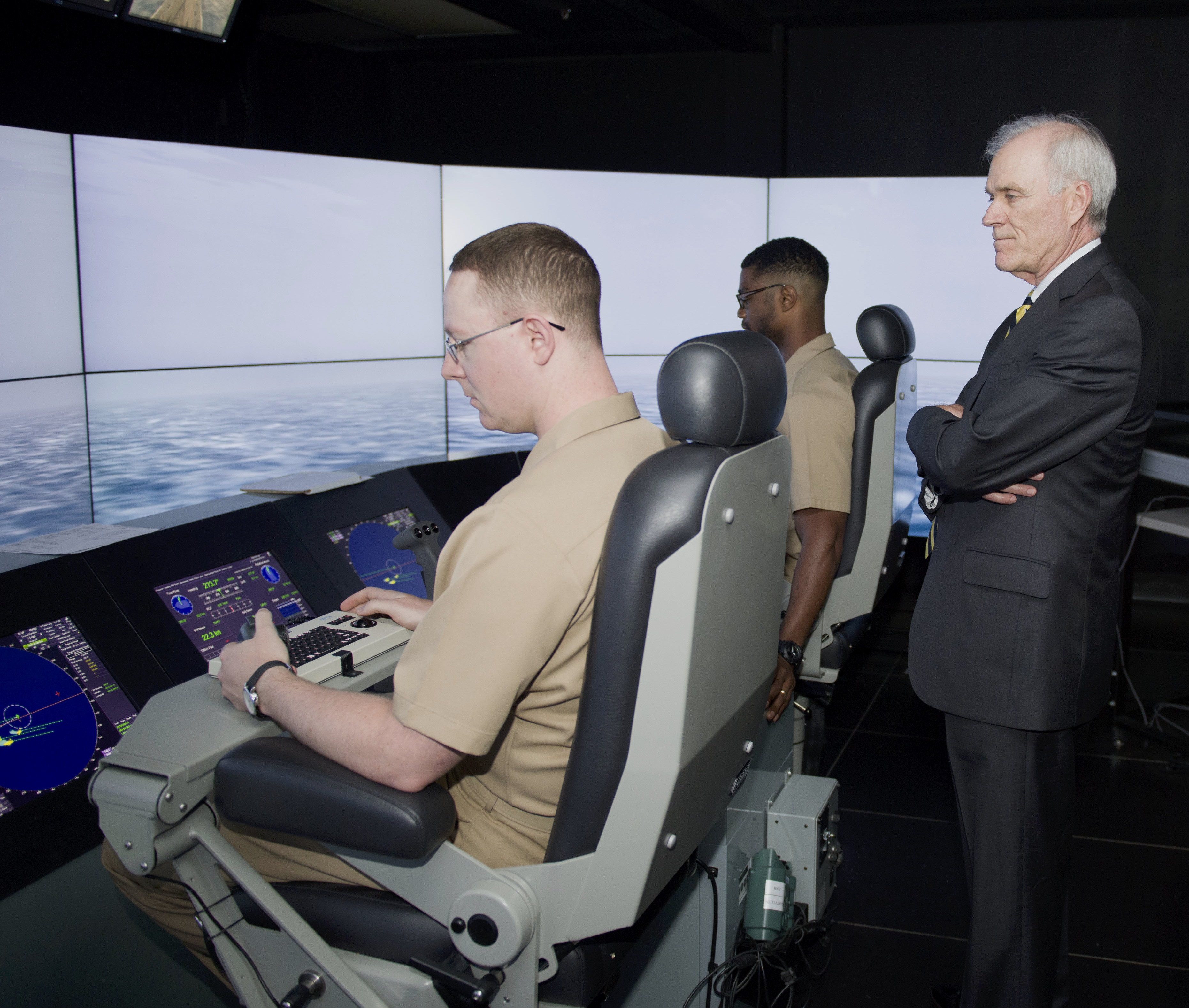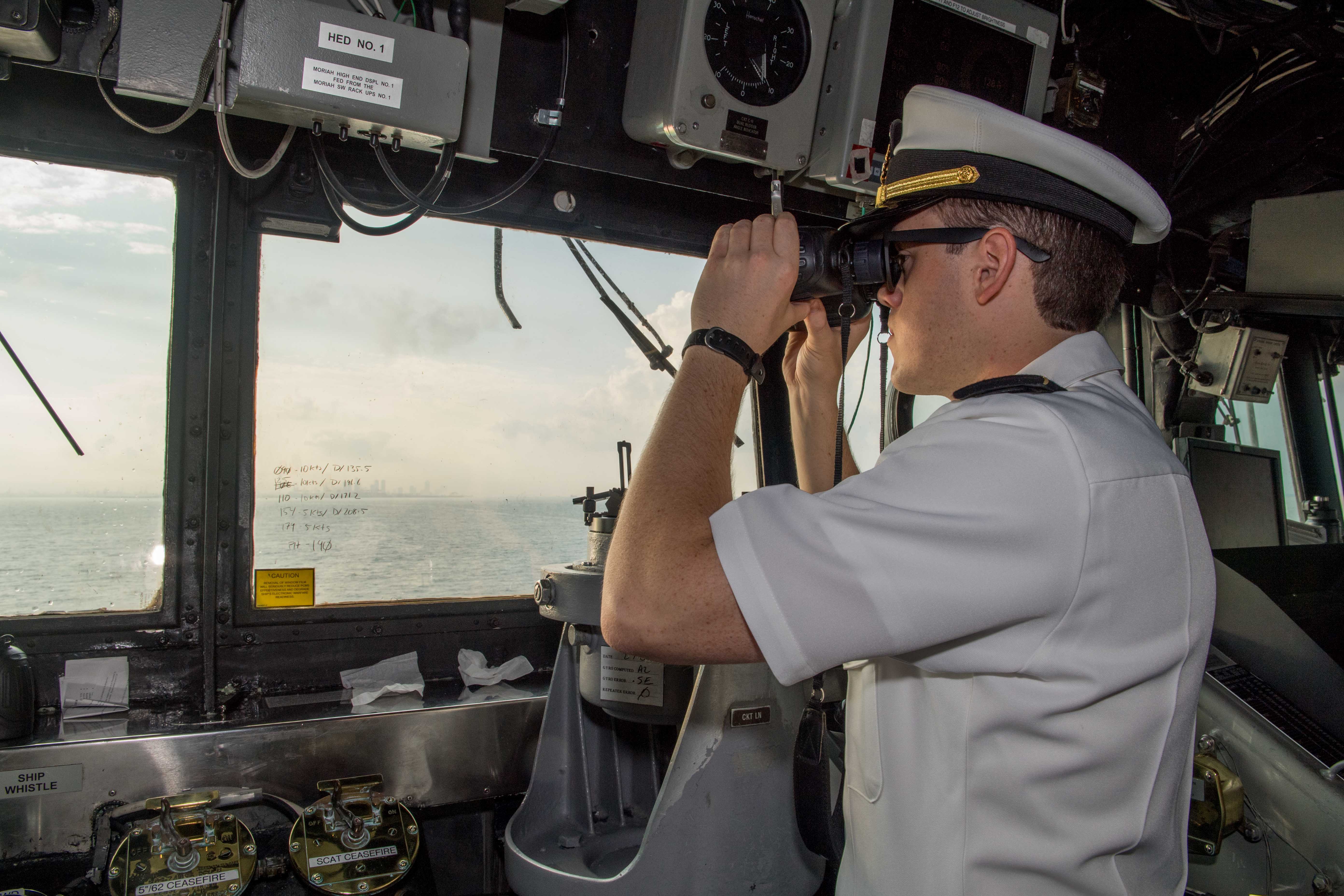
The U.S. Navy is retooling the career path for surface warfare officers in the aftermath of last year’s fatal guided-missile destroyer collisions. The plan requires more school for new officers before they report to their first ships, institutes a new testing regime through major commands and shapes the career path so SWOs spend more time at sea.
The announcement of the new career path comes a few weeks after an evaluation of 164 qualified officers of the deck throughout the fleet that found only 29 of those tested passed with no concerns.
“The intent of this career path is to develop the absolute best commanding officers who are proficient mariners, experienced warfighters and leaders of character,” Vice Adm. Richard Brown, commander of U.S. Naval Surface Forces, wrote in a June 18 message obtained by USNI News.
The goal of the new plan is to increase the capability and experience of surface forces commanding officers.
“The way to do that is primarily through increasing our officers’ experience at sea in ships,” SURFOR spokesman Cmdr. Patrick Evans told USNI News.
“The changes span all SWO ranks – from first-tour division officers to commanding Officers – in order to increase readiness, proficiency, and competency across the fleet. The revised SWO career path and training continuum helps us continue to develop commanding officers who prepare their teams to sail over the horizon and face any challenge, win, and return home safely. That is the gold standard.”
The focus of early SWO training is built around ”two courses to prepare them to drive ships and lead sailors,” according to Brown’s message. The largest changes put an emphasis on basic mariner skills earlier in the career path.
In addition to the current basic officer course, new ensigns will attend a six-week officer of the deck course that will include “International Standards of Training, Certification and Watchkeeping (STCW) courses in Radar Operator, Electronic Chart Display and Information System-Navy (ECDIS-N), Automated Radar Plotting Aid (ARPA), and more than 100 hours of simulator training,” the message reads. The Navy will roll out a four-week OOD course next year and the full course by 2021.
“Following successful completion of these two courses, an ensign will report to their first warship, where their focus will be to qualify as OOD and surface warfare officer,” the message reads. “A junior officer can complete either a 30-month tour followed by a second 18-month sea tour or one single longer tour of 48 months.”
Following a junior SWOs first division officer tour, they will report to a second newly developed officer of the deck course that emphasizes managing the bridge. The SWOs will be tested again before heading to a second division officer tour.
For the division head tours, the service eliminated afloat staff tours as an option, thereby pushing SWOs into operational jobs on ships. For executive officers, the plan adds an additional ship handling evaluation before XOs can move on to command.
What the plan doesn’t change is the XO ship commander “fleet-up” structure that has executive officers become the next commanding officer of a ship when the CO moves on. The fleet-up program, instituted in 2006, has been criticized following the Western Pacific collisions, and internal Navy studies have shown the program has had a mixed record of success.
In his message, Brown stood behind the fleet-up concept.

“The CO will build upon their XO tour on the same ship; will know their ship and crew; and will have the competency, character and leadership to effectively command on day one,” he wrote.
The emphasis on seamanship training ashore is a move away from a previous generation of thought in which SWOs were expected to learn their craft while underway and juggling the responsibilities of a junior officer.
In the early 2000s, the Navy eliminated the 16-week Surface Warfare Officer School Division Officers Course in favor of computer-based instruction and practical training for junior SWOs underway. The so-called SWOS-in-a-box regime was eliminated in 2012 in favor of an eight-week course ashore before SWOs reported to their new ships. Still, the two reviews the Navy conducted after last summer’s fatal collisions of USS Fitzgerald (DDG-62) and USS John S. McCain (DDG-56) found that basic ship handling and navigation proficiency was lacking. That understanding was reinforced by Brown’s study of OOD qualified surface sailors.
“We must be realistic in confronting the systemic shortfalls that they revealed in core proficiencies across the junior qualified members of the force. We as a community can and must tackle our deficiencies and ensure there is meaningful experience behind our qualification letters,” Brown wrote in his June 6 message.
Former U.S. Surface Forces commander Vice Adm. Tom Copeman told USNI News that the new SWO career path is reminiscent of the division officer training and career path in the early 1980s. That was before an explosion of missions, tasks and more complex technology required of the surface fleets. While Copeman approved of the direction of the new career path and the additional training time and assessments, he told USNI News the proposed training regime is still more modest in time and money than the training for aviators or submarine officers.
“It costs money to train and to provide the experiences needed to be a seagoing professional,” Copeman said.





